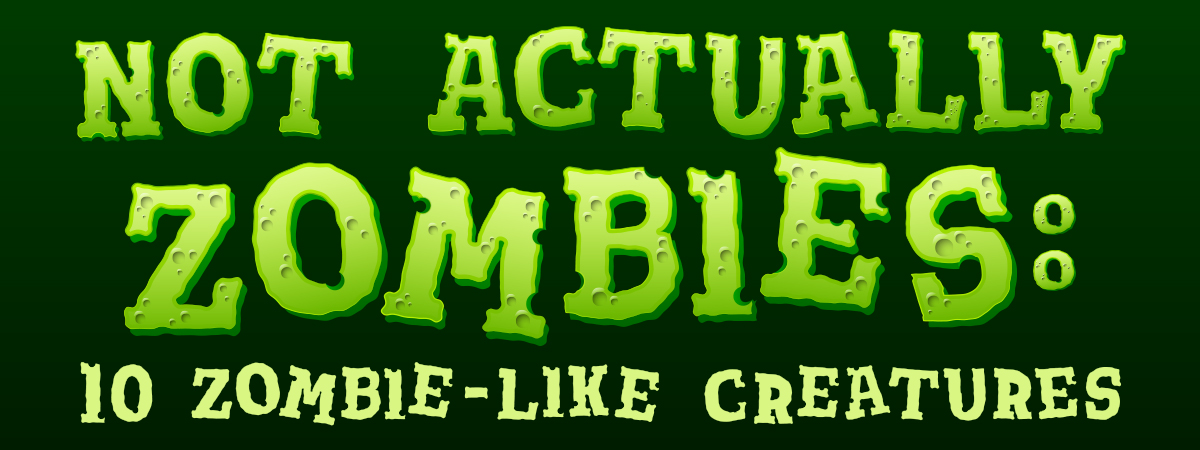So we've been chatting about The Last of Us while watching the new season of Dropout's Um, Actually and the subject of zombies came up. You're probably well aware that zombies have been a huge theme in pop culture for the past decade or so, whether or not they're actually called "zombies". You've got your "living dead", your "walking dead", and your "ghouls". But plenty of fiction includes creatures that are similar to zombies but are generally considered something else. How realistic are they? Could their apocalyptic scenarios happen? And what makes them "not actually zombies"? Let's get into that. But before we look at the most iconic zombie-like creatures from movies and television, let's discuss the difference between zombies and other similar creatures.
Zombies vs. Zombie-like Creatures
To put it simply, zombies are corpses reanimated by magic, at least as the concept originated in Haitian folklore. They are considered "undead" because, once reanimated, they are no longer dead—but also not truly alive, either. Zombies wander around with an insatiable and mindless hunger for the living. They also exhibit horde behavior and transmit zombie-ism to their victims through infected bites or scratches. (In some zombie media, the pathogen affects everyone, living or dead. This means that every living human will reanimate as a zombie after death.) It's important to note that in zombie films and television, the actual cause can be natural or supernatural. Some zombie outbreaks are caused by bacteria or viruses, others by drugs or ancient curses. But the cause is less important than zombie tropes like reanimation, horde behavior, and a mindless hunger for the living.
With that out of the way, let's look at some "not actually zombie" movies and television series—and our thoughts on how realistic they are.
The Last of Us
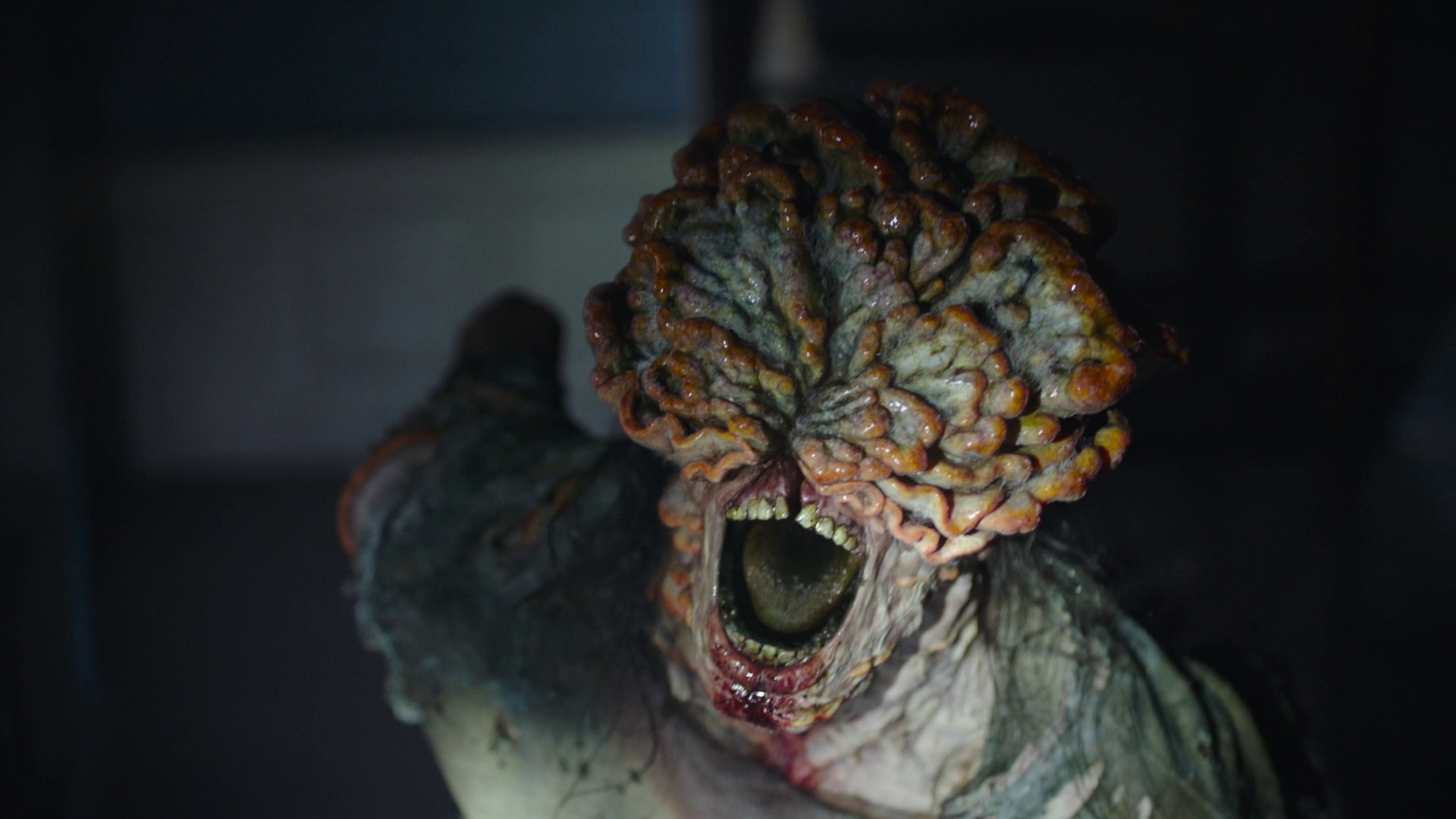
The Last of Us (2023) [HBO]
In the 2023 television series The Last of Us (based on the 2013 video game), a mutation of the parasitic fungus Cordyceps in tainted food causes a global pandemic. Cordyceps infects humans, growing in their brains and making them attack and feed on other people. (This premise was also used in the 2016 film The Girl with All the Gifts, which is worth checking out!) The initial concept is drawn from a real-life fungus (or funguses) that infect tropical ants. In both real-life ants and The Last of Us humans, Cordyceps attacks living hosts, which makes the infected not actually zombies.
But we have to ask: could this happen? The reality of tainted food supplies and rising global temperatures make this one frighteningly possible.
Evil Dead
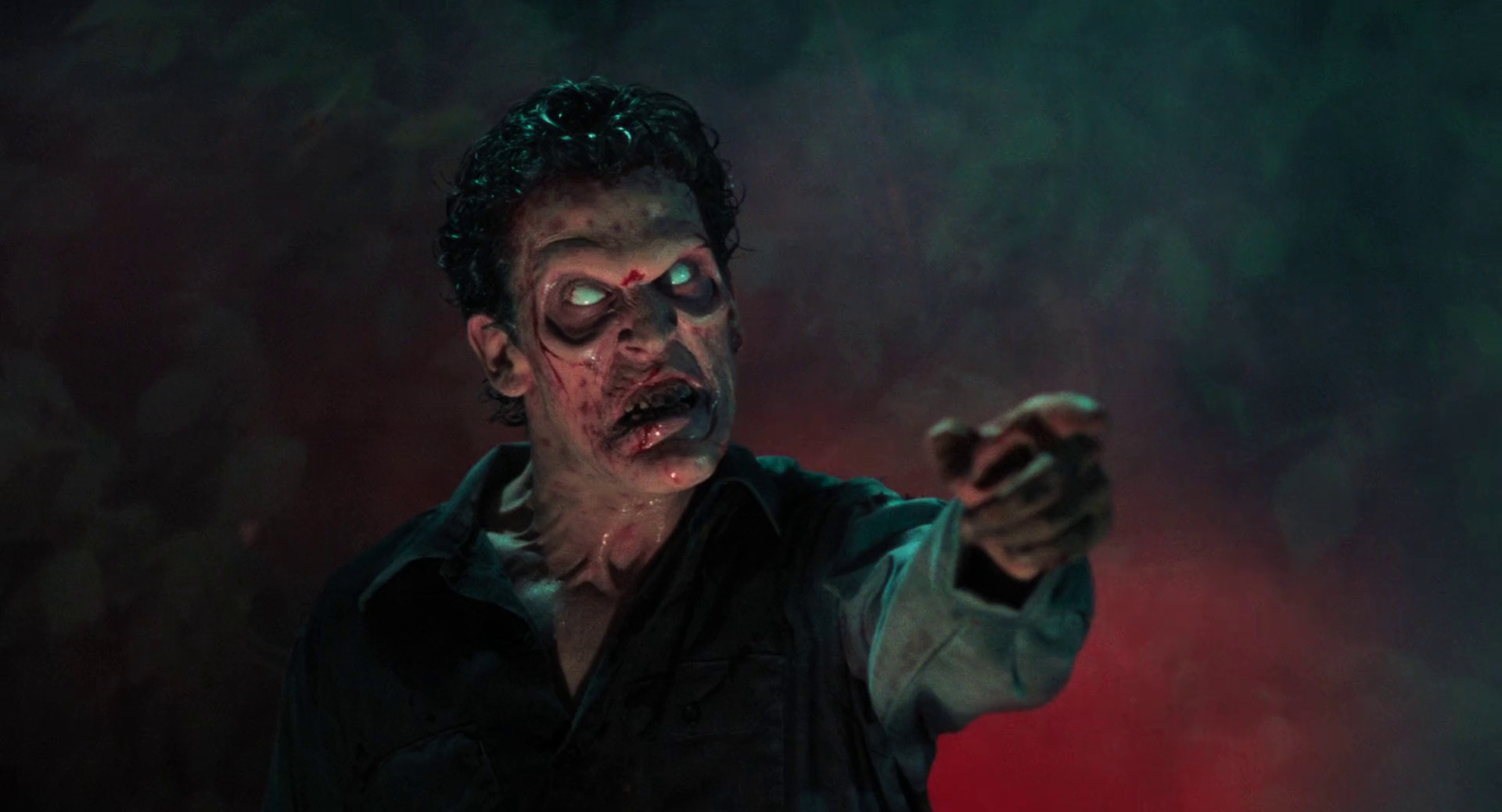
Evil Dead II (1987) [Renaissance Pictures]
The villains of Sam Raimi's Evil Dead franchise are the monstrous Deadites, which are humans (and other animals) possessed by evil, parasitic demons. These demons can possess the living or the dead. Unlike zombies, the Deadites are intelligent, to the point where they strategize, taunt or plea with humans, and even play pranks. They can also change their shape, levitate, and are exceptionally strong and resilient. You guessed it! These factors make them not actually zombies.
Thankfully, the threat of parasitic demons is, well, remote. And to that, we say "groovy".
28 Days Later

28 Days Later (2002) [Fox Searchlight Pictures]
28 Days Later is often credited for popularizing "fast zombies", but yes, we're going to rain on that parade and insist that the infected aren't actually zombies. They do exhibit some horde behavior and they also attack the living, though not to eat them. But the "Rage" virus infects living humans, who will eventually die of starvation. Totally not zombies.
Like The Last of Us, an infection that causes behavioral changes (like heightened violence) is one of the more plausible apocalyptic scenarios.
Game of Thrones
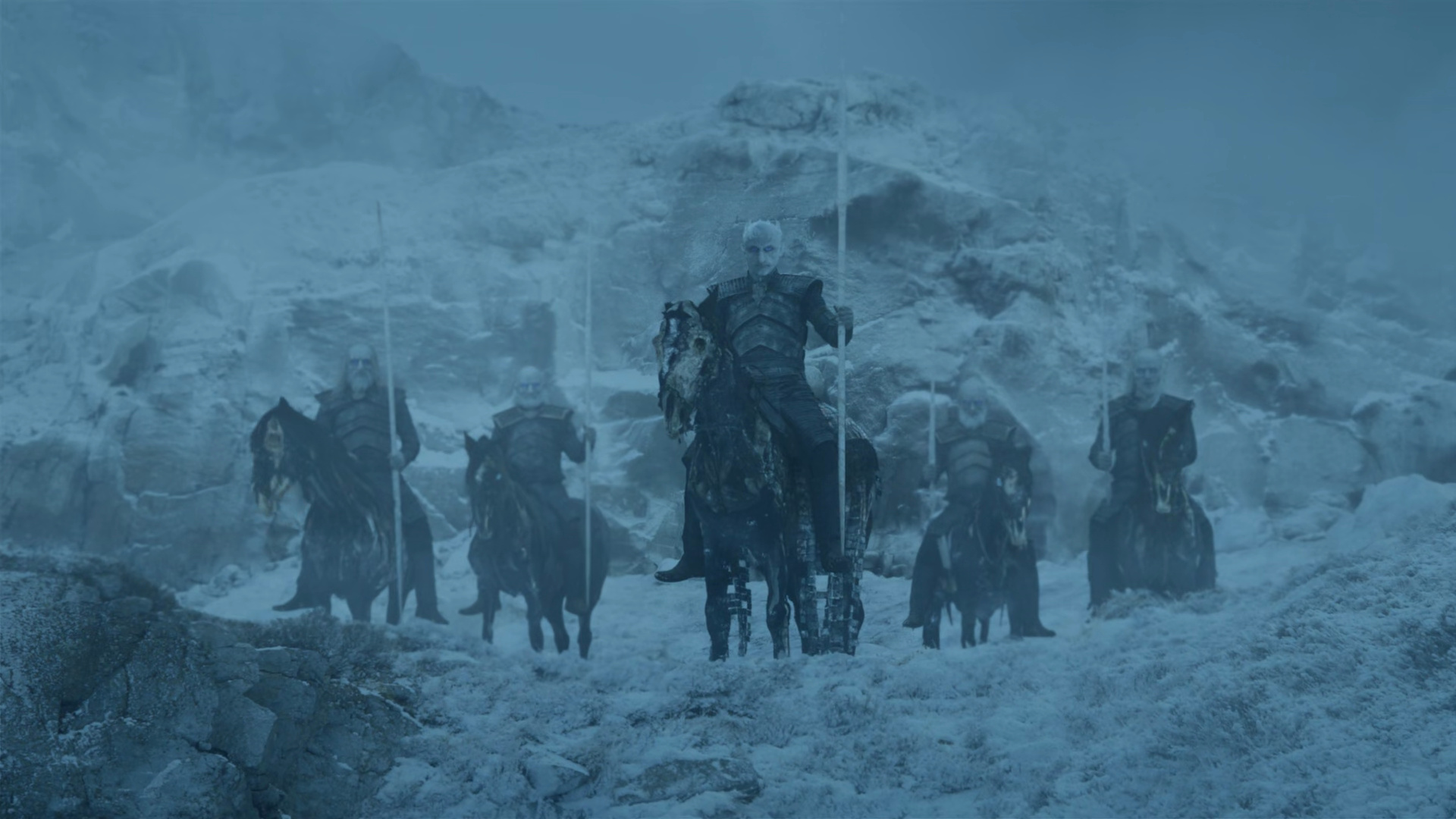
Game of Thrones (2017) [HBO]
The wights in Game of Thrones are very much like zombies: mindless, shambling undead, reanimated by necromantic magic. But their masters, the White Walkers, are something different. The first of them, the Night King, was a human stabbed in the heart with a cursed dragonglass blade. They are intelligent, speak their own language, and can create their own wights. While incredibly powerful, they can be killed by dragonglass or Valyrian steel—even a scratch is fatal—and they know enough to stand behind their wight armies. These traits are decidedly unzombielike.
The possibility of White Walkers and their army of the dead is implausible, of course. We'd consider it one step less plausible than Deadites, but only because it doesn't even take place on Earth.
Frankenstein
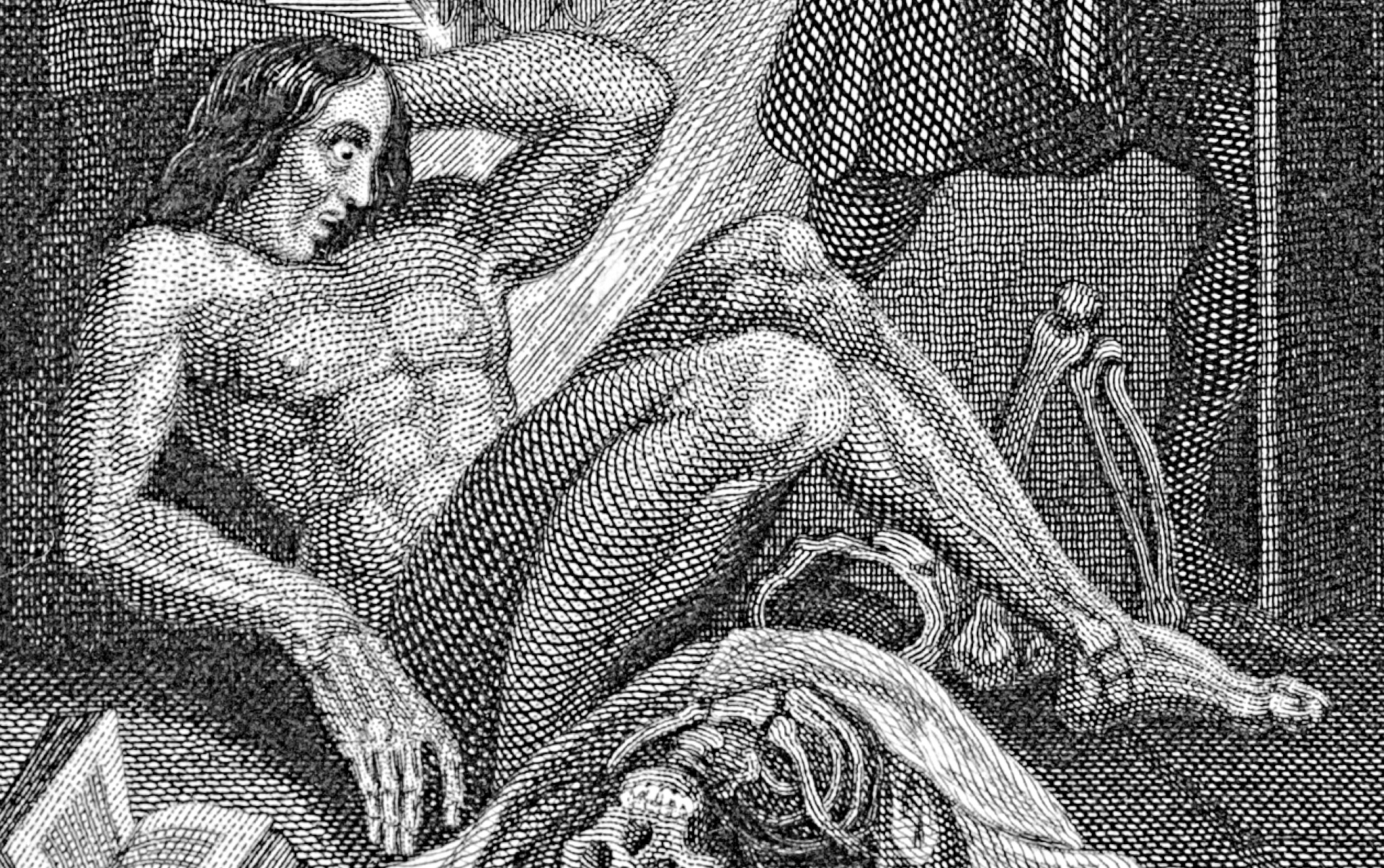
Theodor von Holst's illustration from Frankenstein; or, The Modern Prometheus (1831 edition)
The monster of Mary Shelley's Frankenstein; or, The Modern Prometheus may seem like a zombie, as he is a reanimated corpse—or technically, the parts of many corpses. But he is intelligent, eloquent, and self-aware; for example, he compares himself to the Biblical Adam and also narrates parts of Shelley's novel. And more importantly, he doesn't hunger for flesh or brains, create other zombies, or cause an apocalypse. As such, we can't consider him a zombie.
While Shelley's novel is scientific for its time, the jumpstarting of life from dead or inorganic material is unlikely to result in a thinking, talking monster—at least without a few billion years of evolution.
Pet Sematary
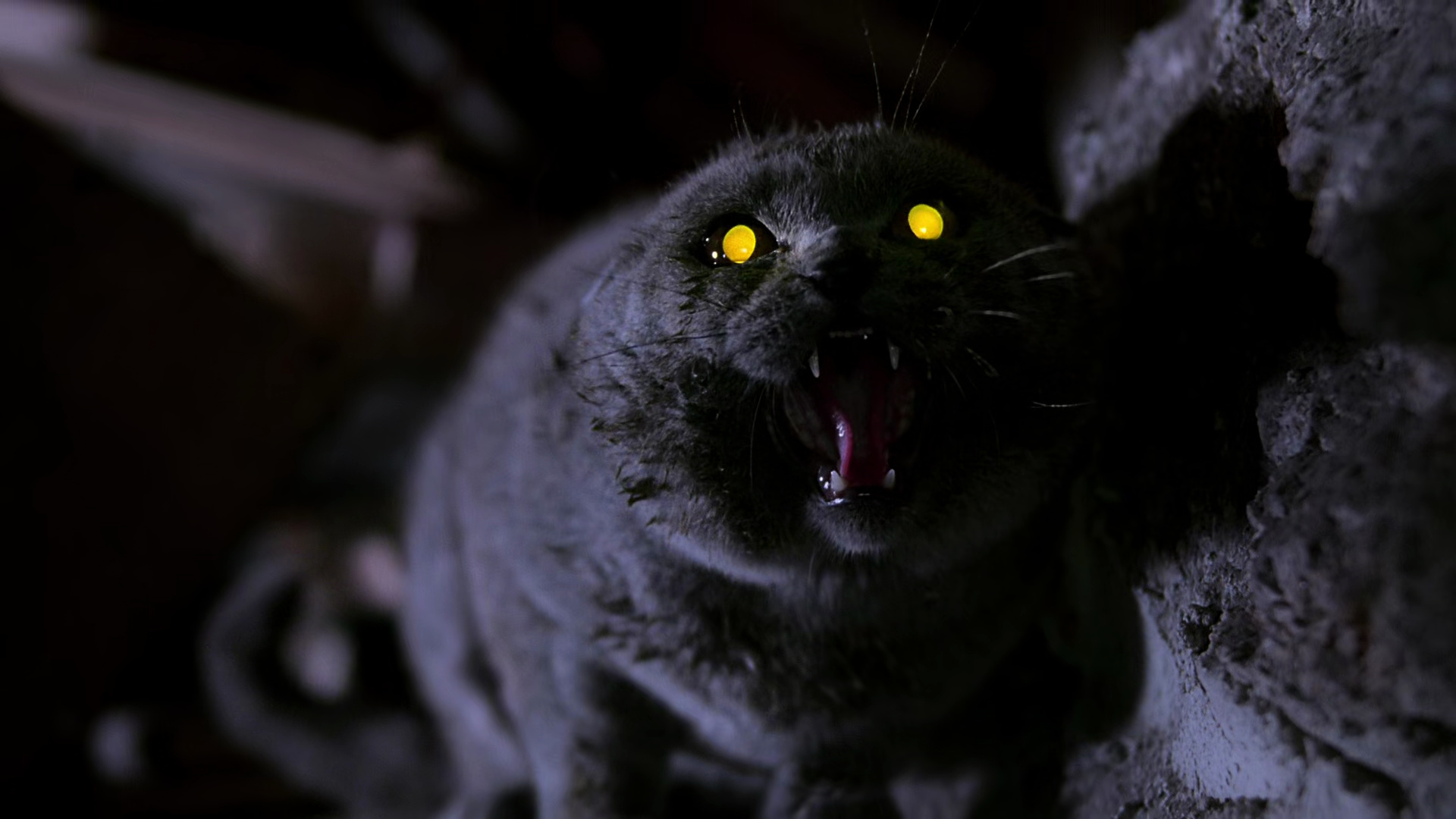
Pet Sematary (1989) [Paramount Pictures]
The Pet Sematary franchise is probably the closest we'll get to actual zombies on this list. There are corpses and they're reanimated in a cursed burial ground—a place that's gone "sour". The zombie-like creatures are malevolent but appear to retain some of their pre-death personality. They also lack an insatiable hunger and can't really exist as a horde. After all, the burial ground is a limited, finite space, which rules out the exponential zombie creation that leads to pandemics.
As for how likely a Pet Sematary reanimation is? It's a frightening idea, and thankfully one that can only come from the mind of Stephen King.
I Am Legend and The Last Man on Earth
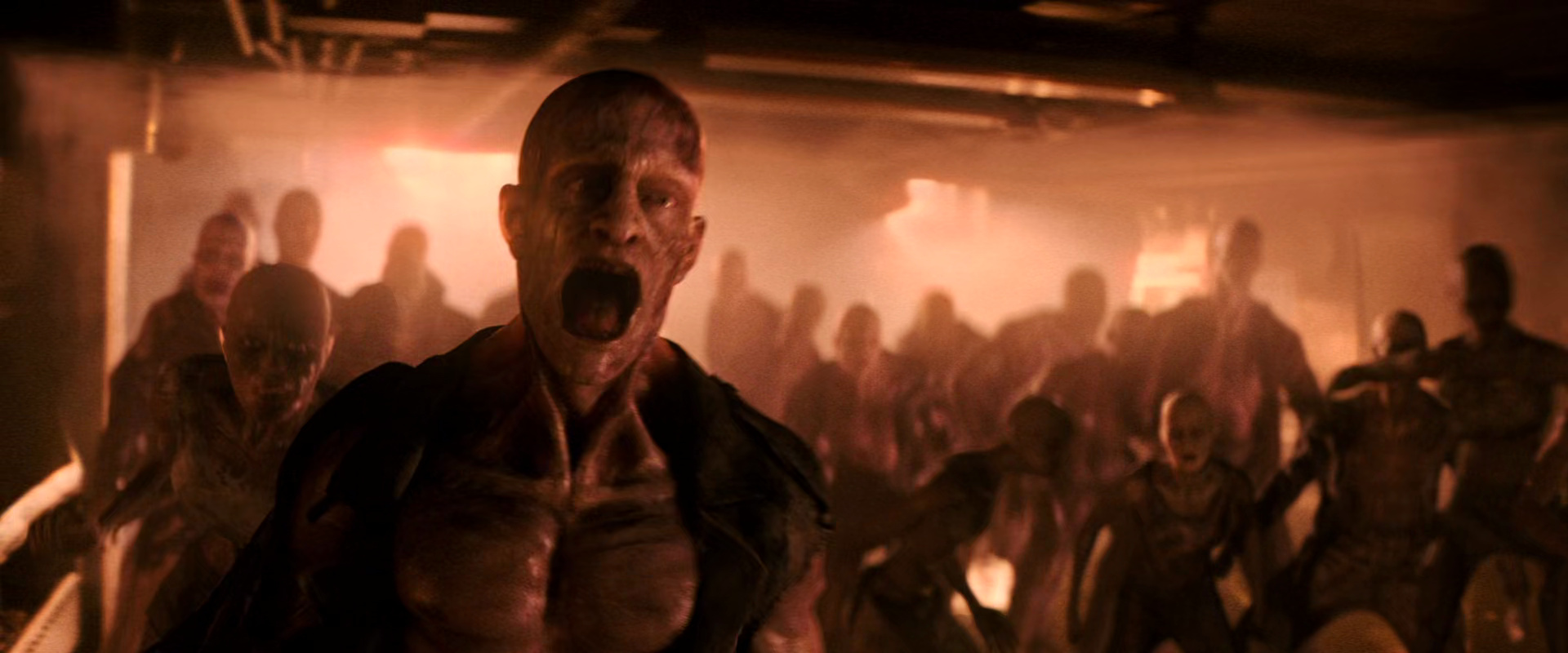
I Am Legend (2007) [Warner Bros. Pictures]
Richard Matheson's 1954 novel I Am Legend is set in a worldwide vampire pandemic. A strain of bacteria turns living survivors into vampires, but also reanimates the dead into undead. In the 1964 film adaptation, The Last Man on Earth, the vampires are slower and somewhat more akin to zombies. George A. Romero credited both the novel and film adaptation as influences for his Night of the Living Dead in 1968. Despite this, the undead of The Last Man on Earth are vulnerable to garlic, sunlight, mirrors, and stakes—which makes them vampires, not zombies.
While the plots of both I Am Legend and The Last Man on Earth involve plenty of scientific research, they're both rather fantastical.
Firefly and Serenity
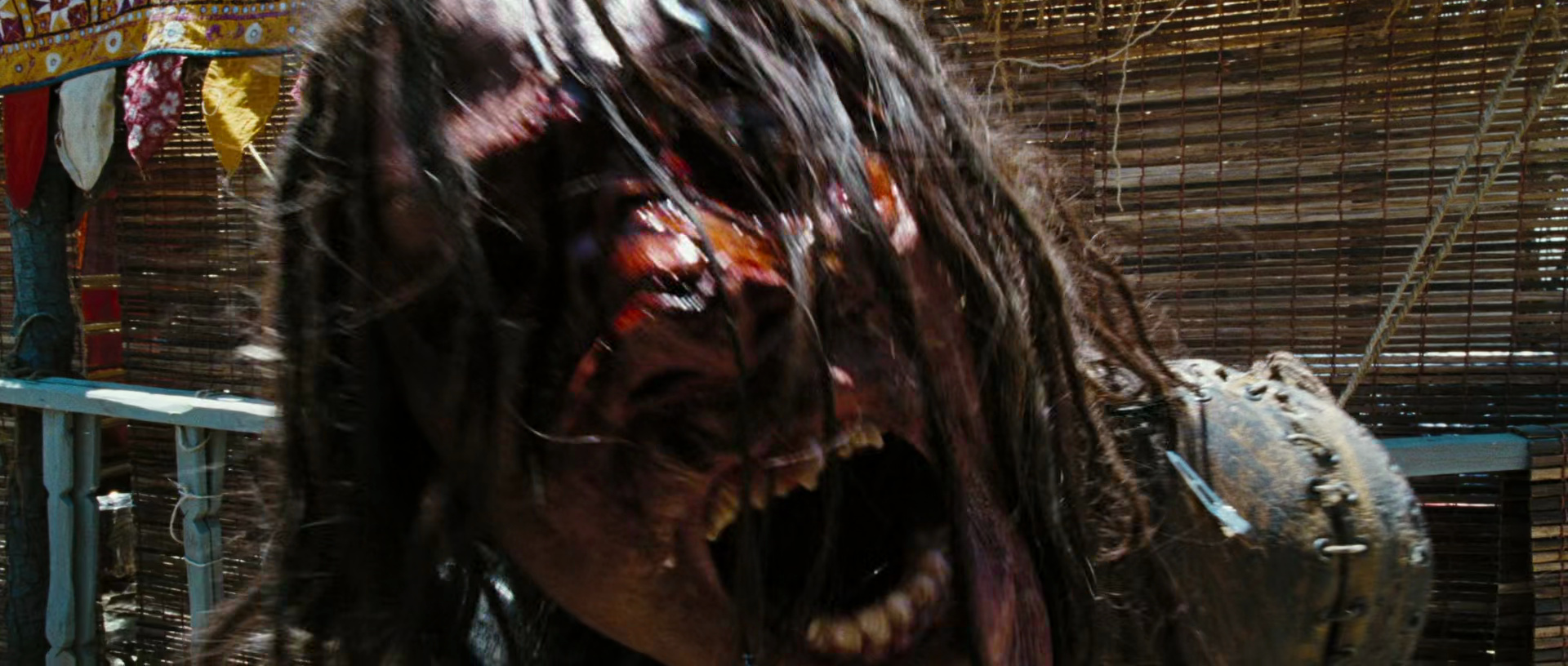
Serenity (2005) [Universal Pictures]
The Reavers of the 2002 television series Firefly and 2005 film Serenity bear plenty of similarities to zombies. They're somewhat intelligent, at least enough to pilot spaceships, but they care very little about their own well-being. They're extremely violent and will eat other humans—plus they exhibit horde behavior and look like zombies. However, they're actually living people affected by the chemical agent "Pax", which doesn't appear to be contagious in any way.
Could such a thing happen? It's unlikely at the moment. But considering that Firefly and Serenity take place nearly 500 years in the future, it's impossible to say.
The Crazies
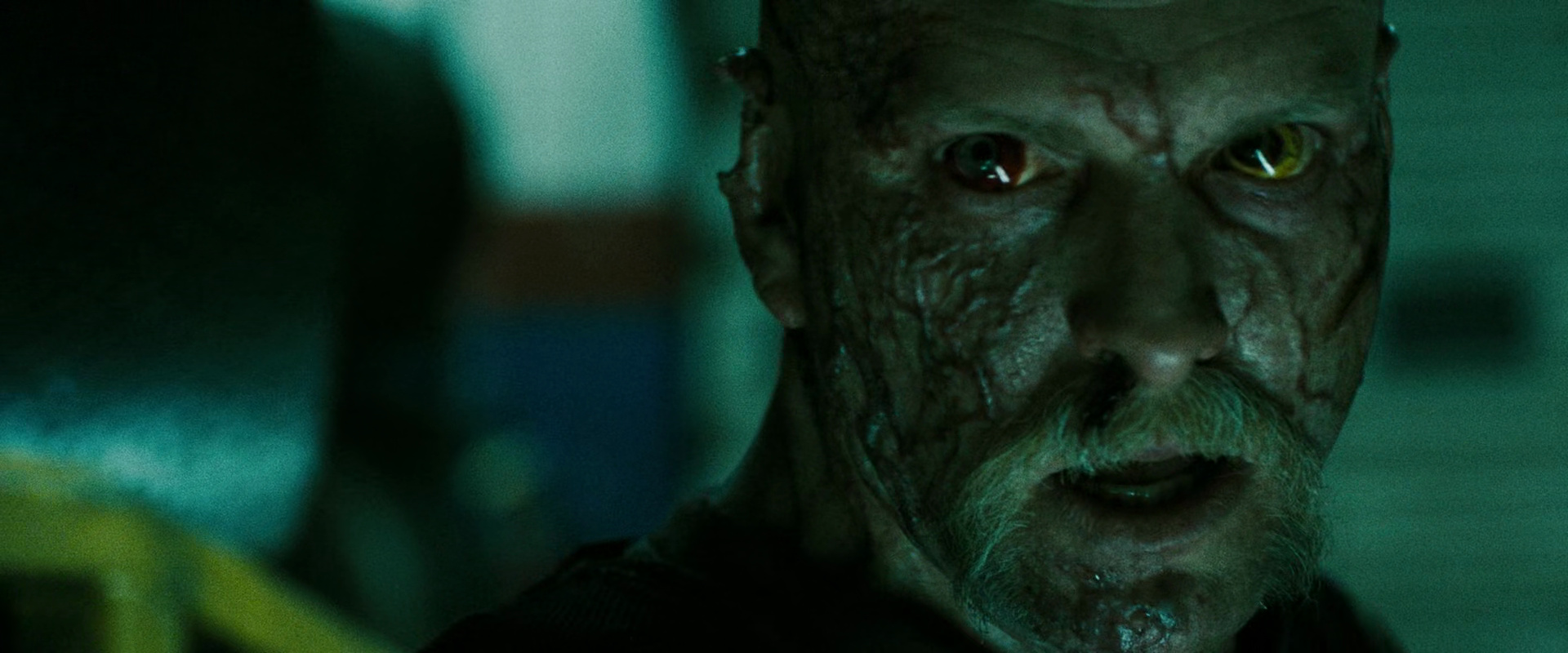
The Crazies (2010) [Overture Films/Participant Media]
The Crazies involves a military accident that unleashes a rage-causing virus into the local water supply. That may sound similar to other entries on our list, like the rage virus from 28 Days Later and the tainted resources from The Last of Us. The original 1973 film was directed by George A. Romero, creator of the Night of the Living Dead series, but its infected are ordinary people—though prone to acts of violence. In the 2010 remake, however, the infected develop a decidedly zombie-like appearance. Both films imply that the virus is spreading, on its way to an epidemic. It won't be a zombie apocalypse, however, as these creatures are still alive.
How plausible is it? A virus that causes behavioral changes tainting our water supply? Maybe, but it's unlikely to make us look like the walking dead.
Overlord
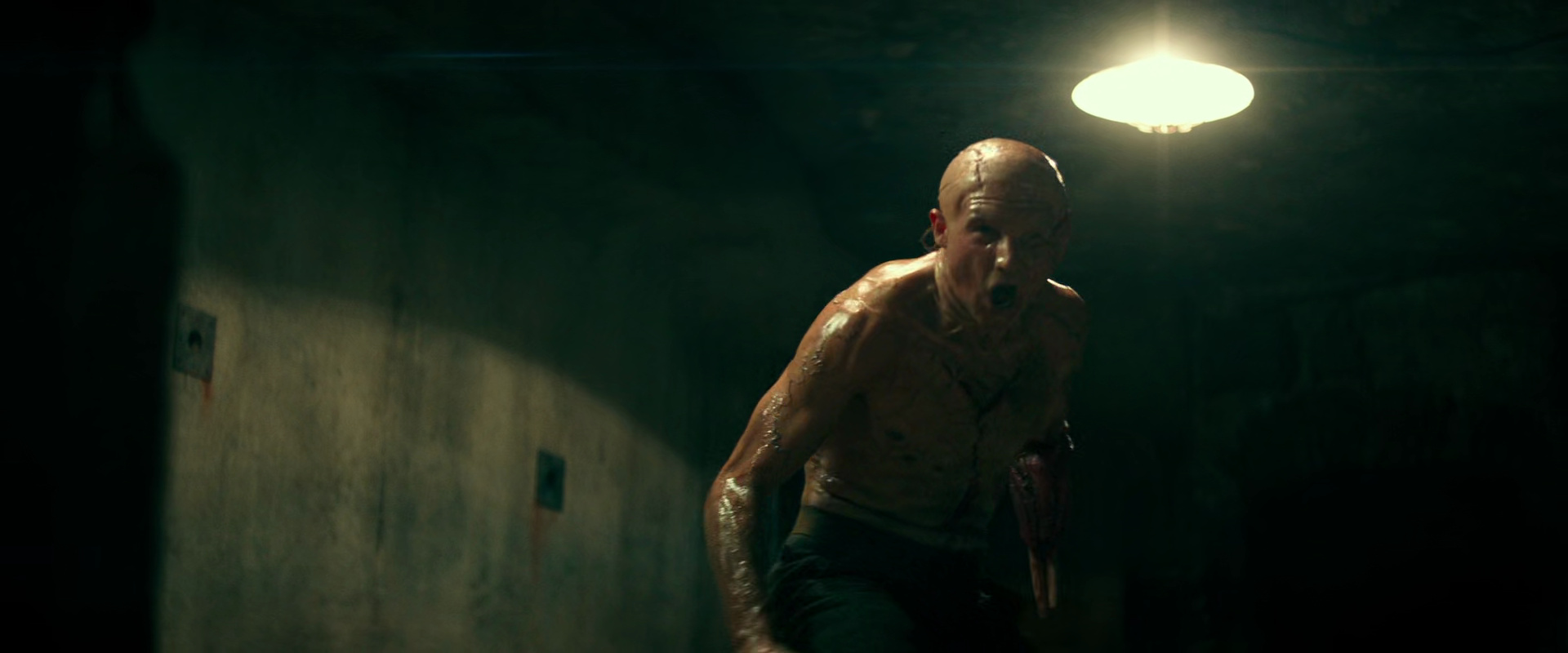
Overlord (2018) [Paramount Pictures]
"Nazi zombies" is an actual horror subgenre, and our favorite (sort of) example is 2018's Overlord. Nazis inject prisoners with a black tar-like substance that turns them into strong and hardy mutants. As you could probably guess, the mutants aren't actually zombies because they don't have to be reincarnated and also because they can't spread their zombieism. This, plus the required injections with a finite substance, mean that we can rule out a zombie apocalypse.
This is another implausible scenario, as it's based on a mysterious fluid welling up from the ground, not to mention the Nazi "science".
Which was your favorite zombie-ish creature? Did we miss it? Let us know in the comments. Also feel free to tell us if we're totally wrong—it is the internet, after all. Be sure to check out all of our zombie costumes and zombie decorations, too. They're great for Halloween, Night of the Living Dead watch parties, or any time you want to scare the neighborhood!
